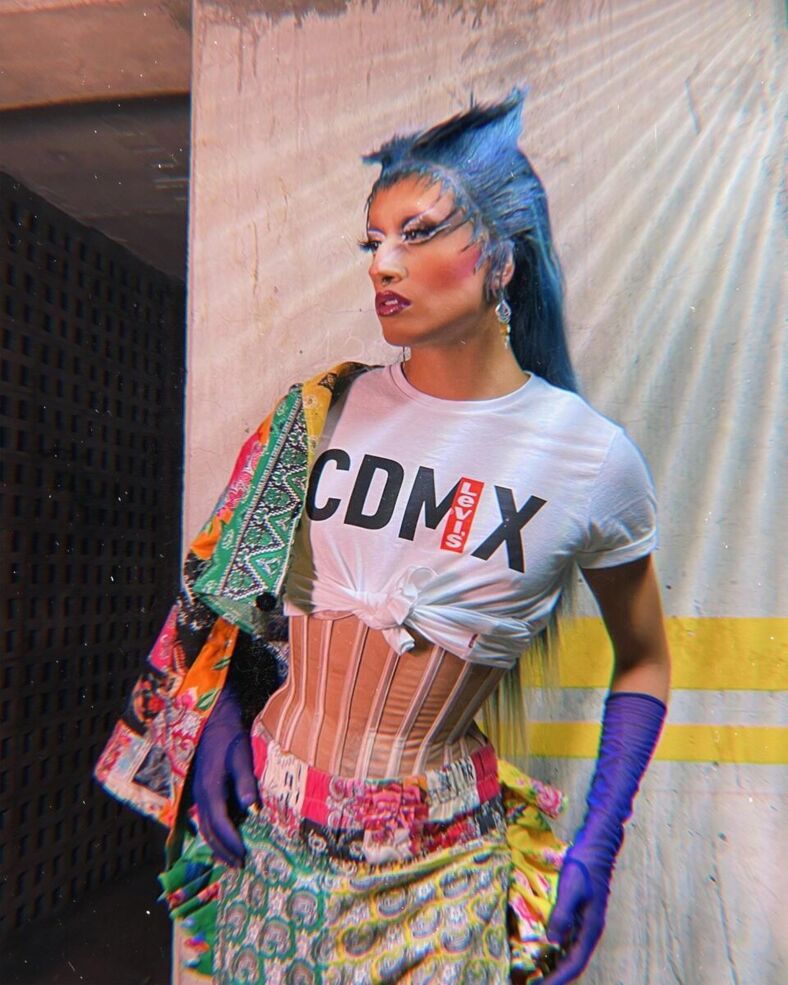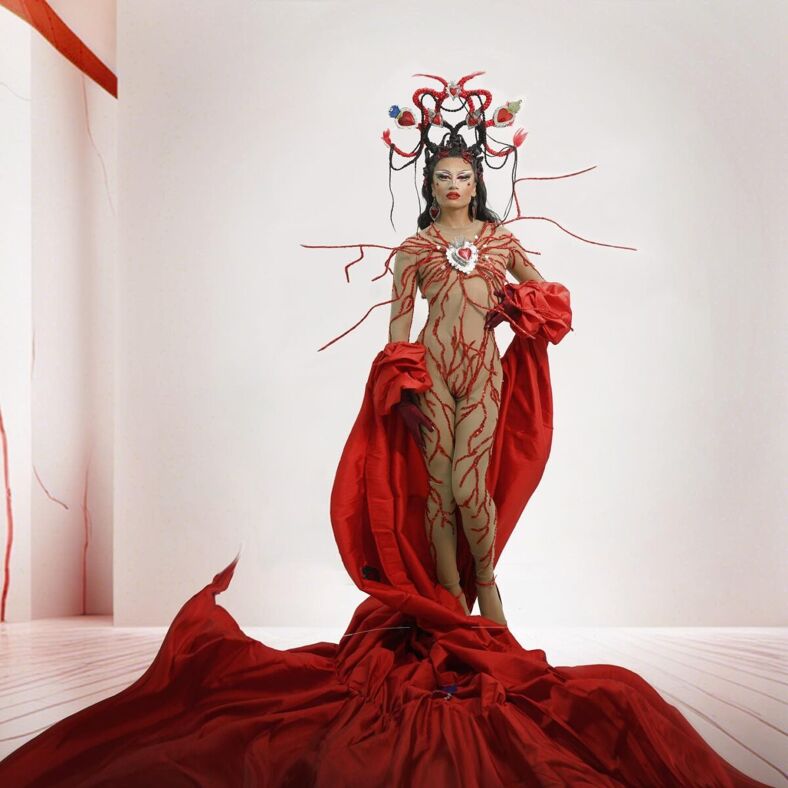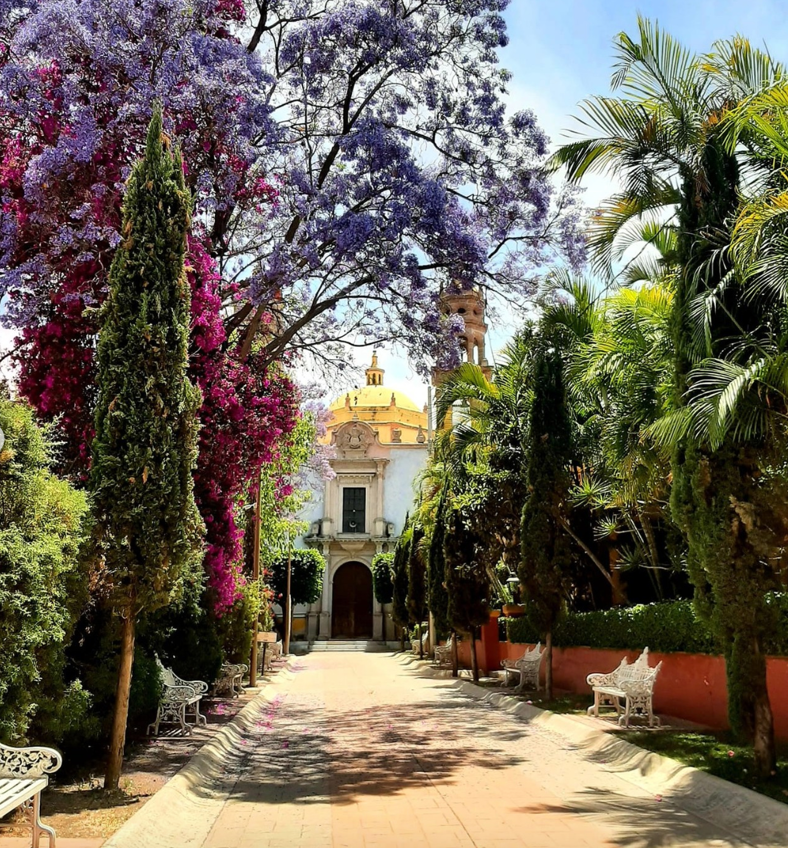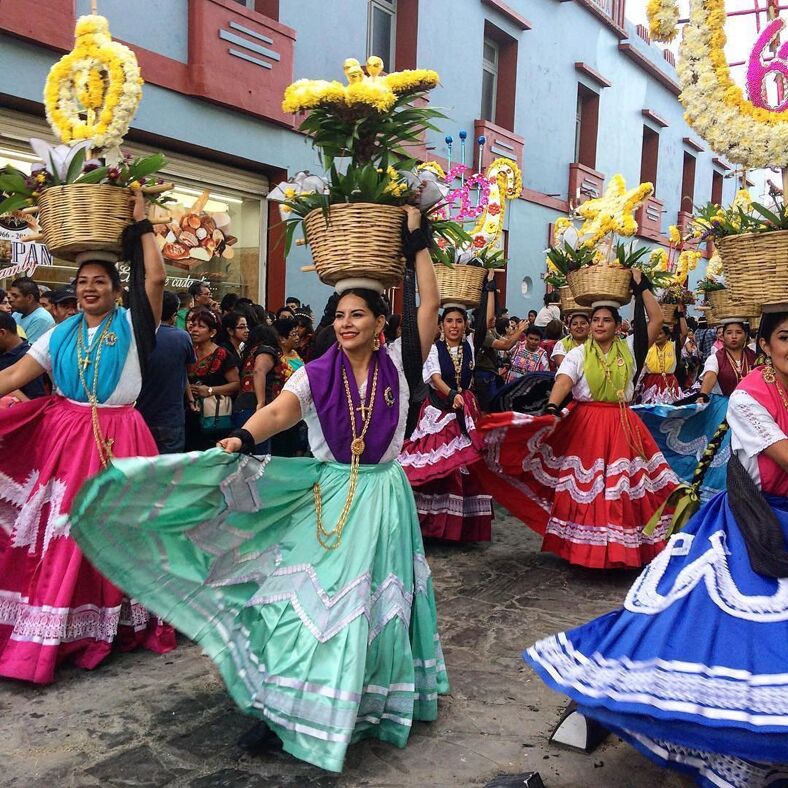
There are so many international Drag Race spinoffs now that it’s impossible to name them all in one breath. Still, Drag Race México managed to make its own mark on the franchise after serving up glamour, drama, and Mexican heritage in its debut season that finished in early September. Co-hosted by Drag Race stalwart Valentina and Drag Race France standout Lolita Banana, the show featured a roster of stunning queens while entertaining many Drag Race diehards.
Unfortunately, the season inspired much debate due to its obvious favoritism towards winner Cristian Peralta. However, it also allowed uniquely charismatic and talented queens like Matraka – who won the show’s #FanFavorite award – to shine.
In addition to being the season’s “fashion queen,” Matraka was also its most creative and authentic thinker, proving over and over that she could synthesize Mexican traditions with a modern drag aesthetic. It’s for that reason that I invited her to share her travel tips with me and fellow GayCities readers. I figured that she, better than anyone, could provide a glimpse into the real México – that is, the one beyond the glossy Insta stories of Tulum, Cancun, and Puerto Vallarta.
So, if you’re interested in how a Mexican vacation can introduce you to new ways of life – or if you just want to add a new Mexican city to your itinerary — then read on. Matraka’s advice and insight for gringo travelers might surprise you.
This interview has been edited for clarity and has been translated from the original Spanish by the author.
Now that you’ve won #FanFavorite, how has your life changed?
I’m very happy to have received the title of #FanFavorite. Connecting with everyone, with the majority of people, is something that I consider a very big achievement. It was one of my goals to send my message to whomever I could reach. And knowing that they had such a beautiful response … Well, for me it is totally an honor. And I also see the response when going to work in bars and clubs where I have performed, because I receive many gifts. The response is very nice. It has opened doors for me to work on new things, so the truth is I am very, very happy.

What types of professional projects do you have going on now?
Well, right now I have been trying to do collaborations with brands of artisanal jewelry lines. I’ve also been doing collaborations with clothing brands for my merch. I’ve been sort of seeing how the exposure of the program is going to help me sustain myself in the future. There is also some talk about doing a tour – and I can’t tell you much – but there will be a tour. And together with my House, El Cantón Traka, we are now doing shows. Together, with my drag children, we are doing a folkloric variety show that we are beginning to present and spread.
The last time we spoke, you told me a little about your hometown, Purísima del Rincón. What’s one reason why a queer person might want to visit?
Well, I think that Purísima del Rincón has many things to tell, and I really think that if you are a person who is interested and knows how to search, you can find super interesting stories wherever you go. It’s a very small place, so it gives you a lot of peace. It’s also near the Cerro del Palenque [an important oxygen source for the region], so it feels like the air is different, the essence is different, the energy of the people is different. Sometimes I feel that people who live in cities live at a very accelerated pace and there is no opportunity to be at peace. It’s like they think they are going to get bored [in a quiet place]. But I think those places make you feel. They give you the tranquility that you need.
And now [the city] has its museum … for the painter Hermenegildo Bustos, who for me is one of my favorite painters. As for the food, the typical food here is enchiladas with cured meat. You can go to several places where they offer you enchiladas. And some people are already recognized … As in, there are families that are well-known here because of their food.

What’s another city in Mexico that you love and why?
The state of Oaxaca is one of the places that you really need to visit. It is a very beautiful place, it’s very full of culture, and everywhere you go, there is always something to see. People there still maintain the essence of [Mexican culture]. You have to try the tlayudas [a renowned local tostada-like dish], and … Pipián [a regional mole sauce]. There are many Oaxacan things that are very delicious and all the regions of Oaxaca have a lot to contribute.
What’s your favorite trip that you ever took? Where did you go, what did you do, and why did you love it?
One of the places that I loved to visit was Tlaxcala [in the Tlaxcala state of Mexico]. What I liked was that it was a place that felt very apart from all of civilization. It still had many traditions deeply rooted in indigenous cultures. The way of life of the people is very traditional. Each house has a temazcal [a sweat lodge with pre-Columbian origins]. They live near volcanoes … the most important volcanoes in Mexico – Popocatépetl, Iztaccihuatl, and La Malinche. The traditions they carry out have to do with the worshiping of the volcanoes. So, they take their worldview, their cosmology, from the volcanoes.
They also taught me how to make talavera, which are these decorative clay ornaments. So, that trip was very gratifying for me because I learned a lot about the food – which is very delicious – and about living with people, and about drinking pulque [agave wine]. With them, there were days in which I really unburdened myself of many things and many privileges, and decided how to live openly without caring about anything. So it was very nice, it was very rewarding, it was very gratifying.

What was your worst travel experience and how did you overcome it?
Well, I’ve had difficult work trips, and at one point I had to arrive sick. I was recovering from illness, which translated into me feeling very bad and barely managing to get to my hotel. Then I locked myself up and fell asleep all day. It wasn’t very nice, but, well, that’s how things happen. Not all trips have to be super iconic or full of activities.
What misconceptions do you think that people from other countries have about Mexico?
Well, whenever I’ve received a response from foreigners coming to Mexico City, they always have a fear that Mexico is dangerous. I mean, really, we are not a first-world country, but Mexico is so big that most places you go, it’s not going to be a dangerous place. There’s a lot of warm people, a lot of good people, and we possess a lot of love – a lot of love for everyone. We have more affection and romance than in other countries, even.
What aspects of Mexican culture do you hope will appear in the next season of Drag Race México?
Well, next season I hope to not only see indigenous cultures, but also hope to see the culture of colloquial Mexico – as in, the people of the neighborhoods. I think we [the people of the neighborhoods] really know how life is lived here in Mexico and that there are many things comprising its essence. Maybe Drag Race can continue learning about that. So, I hope that next season has more essence [of the country]. It already has some, but it can grow much more yet.

Pack your bags, we’re going on an adventure
Subscribe to our weekly newsletter for the best LGBTQ+ travel guides, stories, and more.
Don't forget to share:


















